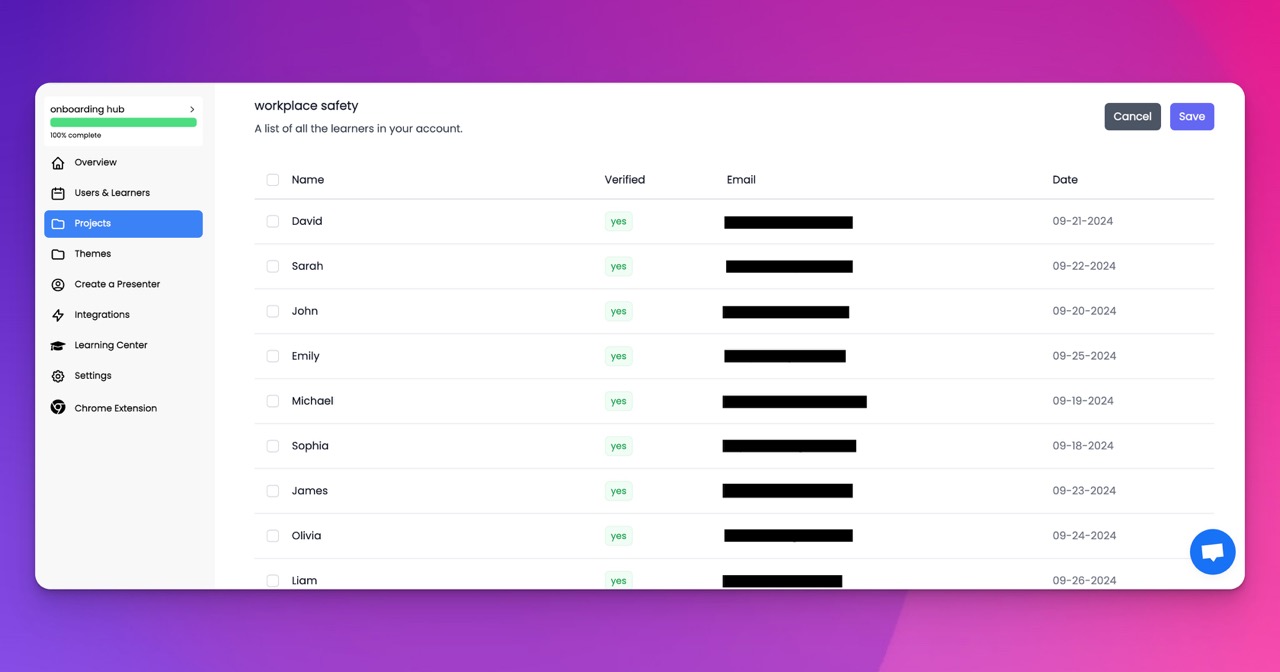🎉 Trainday now integrates with Zendesk and Hubspot 🎉 Trainday now integrates with Zendesk and Hubspot 🎉 Trainday now integrates with Zendesk and Hubspot
🎉 Trainday now integrates with Zendesk and Hubspot
🎉 Trainday now integrates with Zendesk and Hubspot
Contact
Short, Sharp, and Effective - Microlearning for Enhanced Workplace Productivity
Workplace training has undergone a seismic shift in recent years. Traditional, hours-long seminars and dense training manuals have given way to a new champion of learning: microlearning. With its short, sharp, and effective approach, microlearning delivers focused lessons that align seamlessly with the demands of the modern workplace, boosting productivity and engagement.
Let’s explore how this innovative training method is transforming the way employees learn and perform on the job.
What is Microlearning?
Microlearning is a training technique that breaks down complex topics into smaller, more digestible pieces. Each lesson focuses on a single concept or skill and is designed to be completed quickly—often in 3 to 10 minutes.
Delivered through videos, quizzes, infographics, or interactive modules, microlearning meets employees where they are: on their mobile devices, desktops, or tablets. Its concise format not only respects the employee's time but also delivers high-impact knowledge exactly when it’s needed.
Why Microlearning Drives Workplace Productivity
1. Reduces Downtime
Lengthy training sessions often pull employees away from their daily tasks, impacting productivity. Microlearning minimizes this disruption by allowing employees to complete lessons during short breaks or in between assignments. Training no longer has to mean hours lost in the day—it becomes an integrated part of the workflow.
For example, a customer service representative can watch a 5-minute video on de-escalation techniques right before a challenging client call, improving their effectiveness without disrupting their schedule.
2. Faster Skill Acquisition
Microlearning’s laser-focused approach accelerates the learning process. Employees don’t have to sift through irrelevant information; they get exactly what they need, when they need it. This rapid skill acquisition is especially valuable in fast-paced industries where agility and quick adaptation are key.
A sales team preparing for a product launch, for instance, can access short, role-specific modules on features, pricing, and benefits, enabling them to confidently pitch to clients right away.
3. Improves Knowledge Retention
Studies show that learning in small chunks improves retention by reducing cognitive overload. Microlearning takes advantage of this by delivering information in a way that sticks. Employees are more likely to remember and apply what they’ve learned, which leads to fewer mistakes and better decision-making on the job.
Interactive quizzes, flashcards, and spaced repetition further enhance this retention, reinforcing critical concepts over time.
4. Boosts Employee Engagement
Let’s face it—long, monotonous training sessions can be a drag. Microlearning’s bite-sized format is far more engaging, using multimedia elements, gamification, and real-world scenarios to keep employees interested and motivated.
When employees enjoy the learning process, they’re more likely to complete training modules and apply their knowledge, creating a more productive and informed workforce.
5. Enables Just-in-Time Learning
One of the standout benefits of microlearning is its ability to deliver knowledge precisely when it’s needed. Employees can access specific training modules in real-time to address immediate challenges, boosting both confidence and competence.
Imagine a construction worker reviewing a quick tutorial on operating a new piece of equipment moments before using it, or a healthcare professional refreshing safety protocols right before a procedure. This just-in-time learning minimizes errors and enhances productivity.
6. Cost-Effective and Scalable
Creating short, focused training modules is often more cost-effective than developing comprehensive courses. Organizations can update or add new modules as needed, ensuring that training stays relevant without significant time or financial investment.
With platforms like Trainday, companies can transform existing content—such as PDFs or presentations—into engaging microlearning modules, making implementation seamless and scalable.
Microlearning in Action: Real-World Examples
Onboarding
New hires can complete a series of quick lessons tailored to their roles, helping them ramp up faster without feeling overwhelmed.
Compliance Training
Microlearning modules covering safety protocols, workplace policies, or regulatory updates ensure employees stay compliant while minimizing time away from work.
Skill Development
Employees can build or refresh skills in specific areas, such as leadership, software proficiency, or customer service, at their own pace.
How to Implement Microlearning for Workplace Productivity
Start Small and Specific Identify key areas where employees need quick, targeted training. Break down complex topics into manageable chunks.
Leverage Technology Use tools like Trainday to create and distribute microlearning content. These platforms offer analytics to track progress and measure effectiveness.
Incorporate Multimedia Enhance engagement with videos, infographics, and interactive elements that appeal to different learning styles.
Make It Accessible Optimize content for mobile devices so employees can learn anytime, anywhere.
Encourage Continuous Learning Position microlearning as an ongoing resource rather than a one-time event. Promote a culture of continuous improvement and upskilling.
The Future is Short, Sharp, and Effective
Microlearning is reshaping the way organizations approach training and development. Its ability to deliver fast, focused, and impactful lessons makes it an ideal solution for today’s productivity-focused workplace. By empowering employees with the tools they need to learn and perform better, microlearning not only boosts individual success but also drives organizational growth.
Accelerate Compliance.
Deliver OSHA-Ready Courses Instantly.
Empower your team with data-driven training solutions tailored to your industry's safety standards. Stay compliant, reduce risks, and boost productivity with AI-powered course creation.
